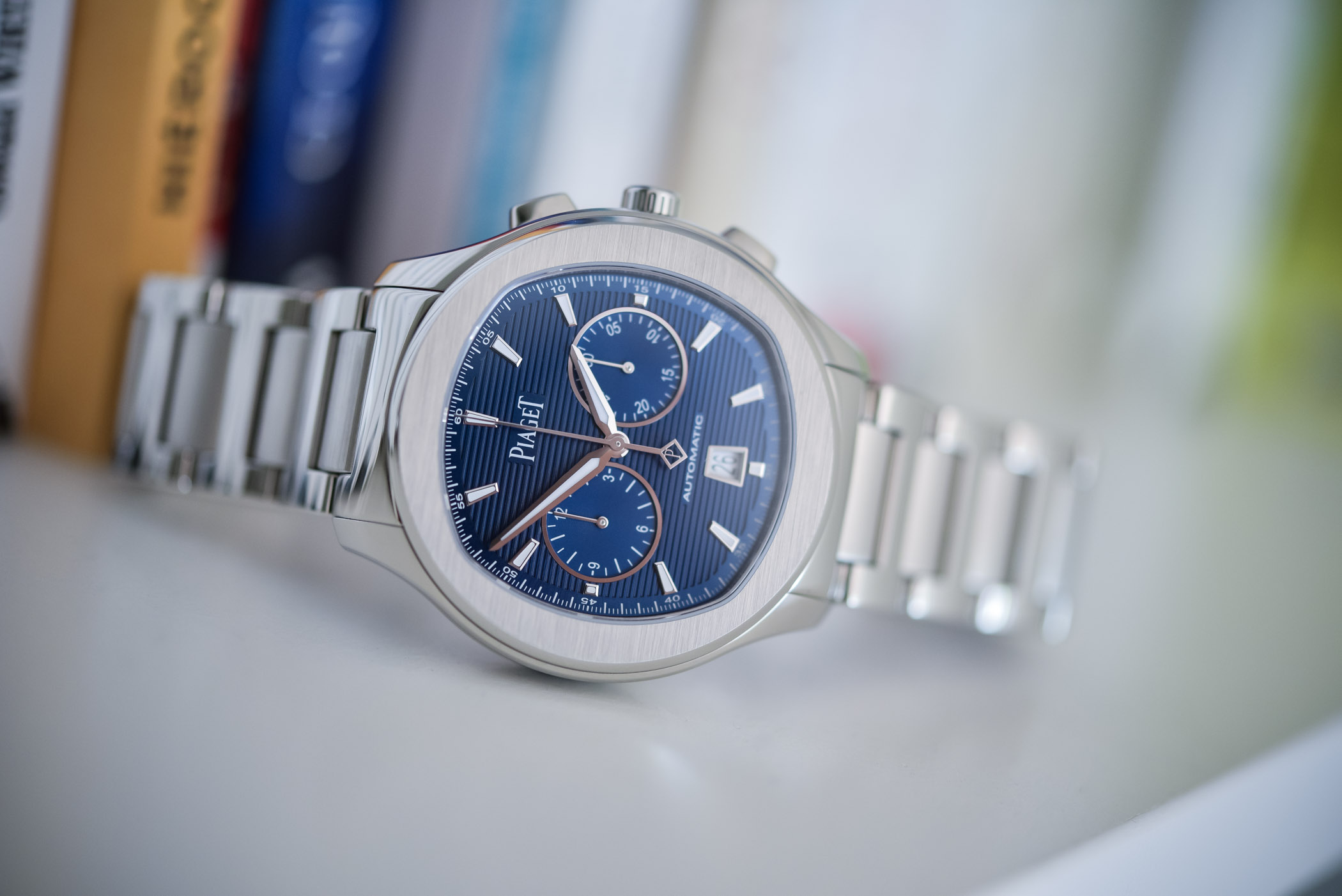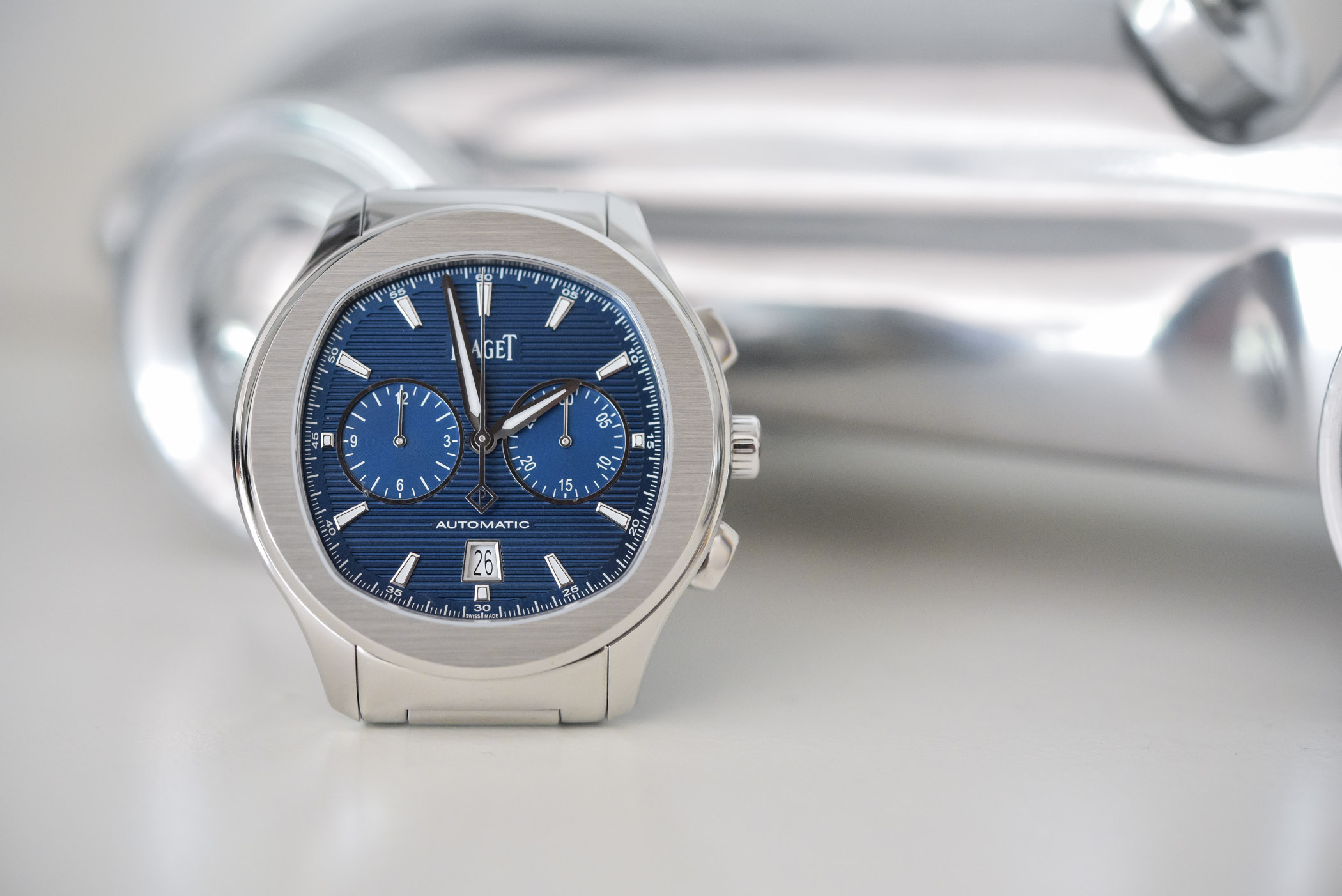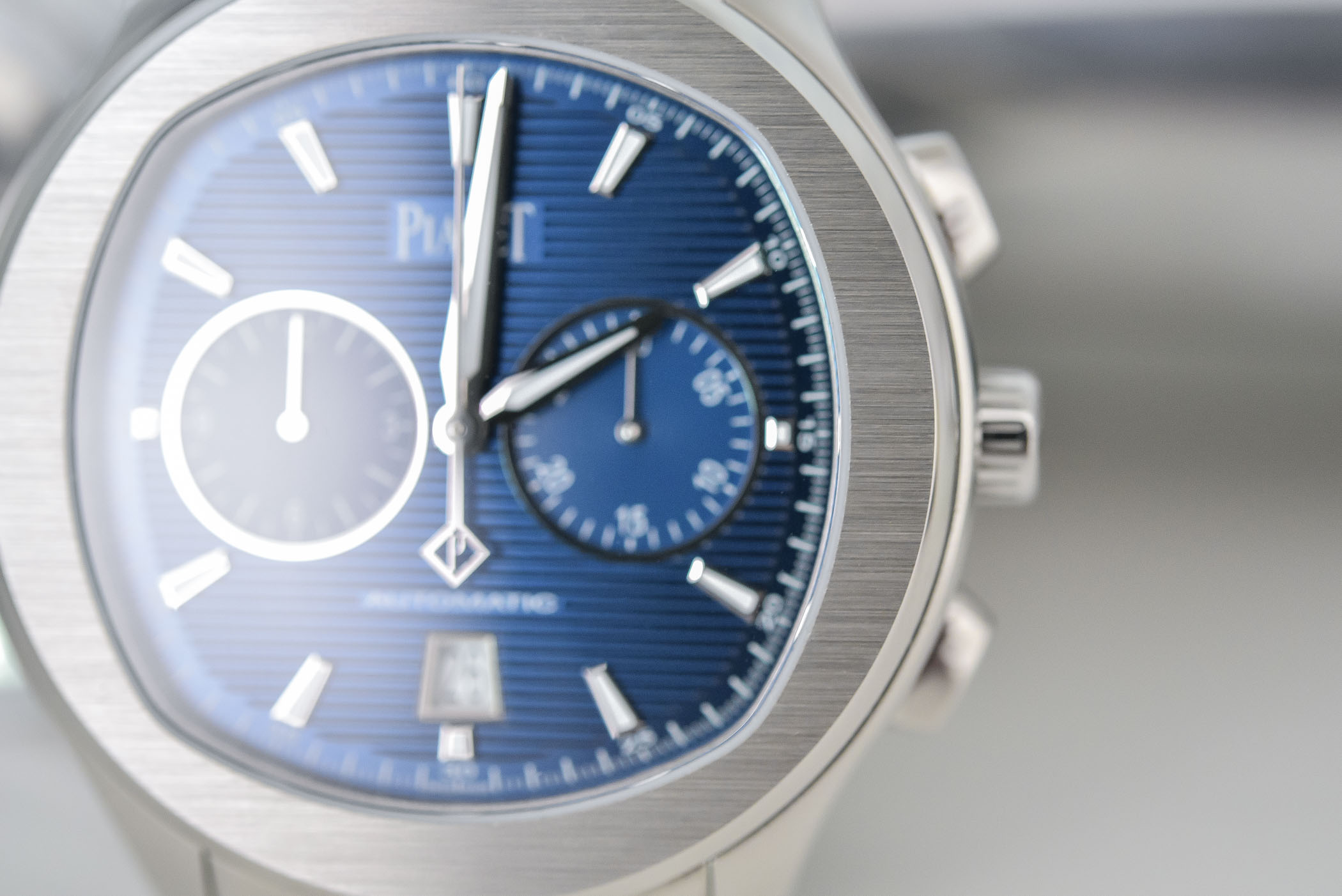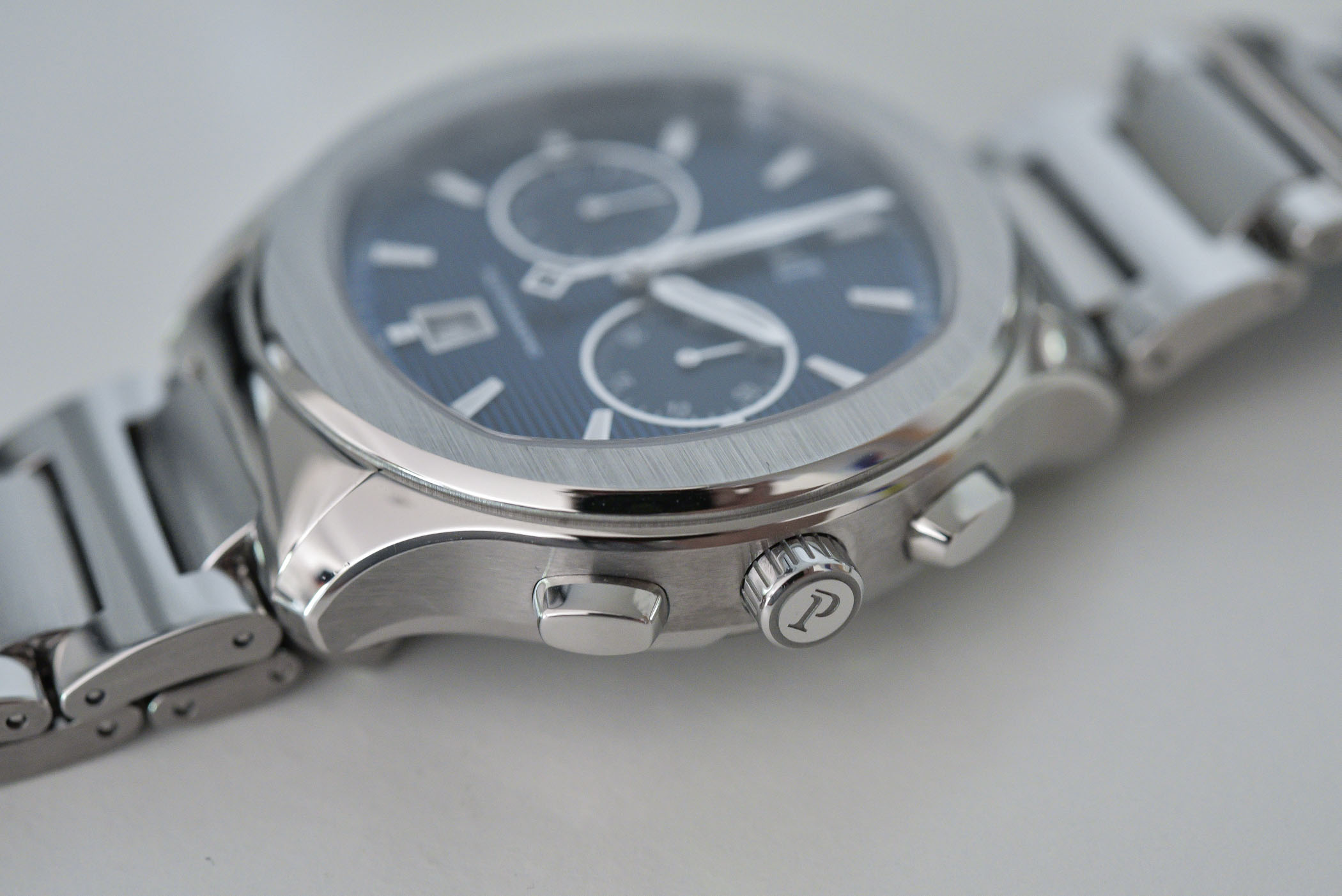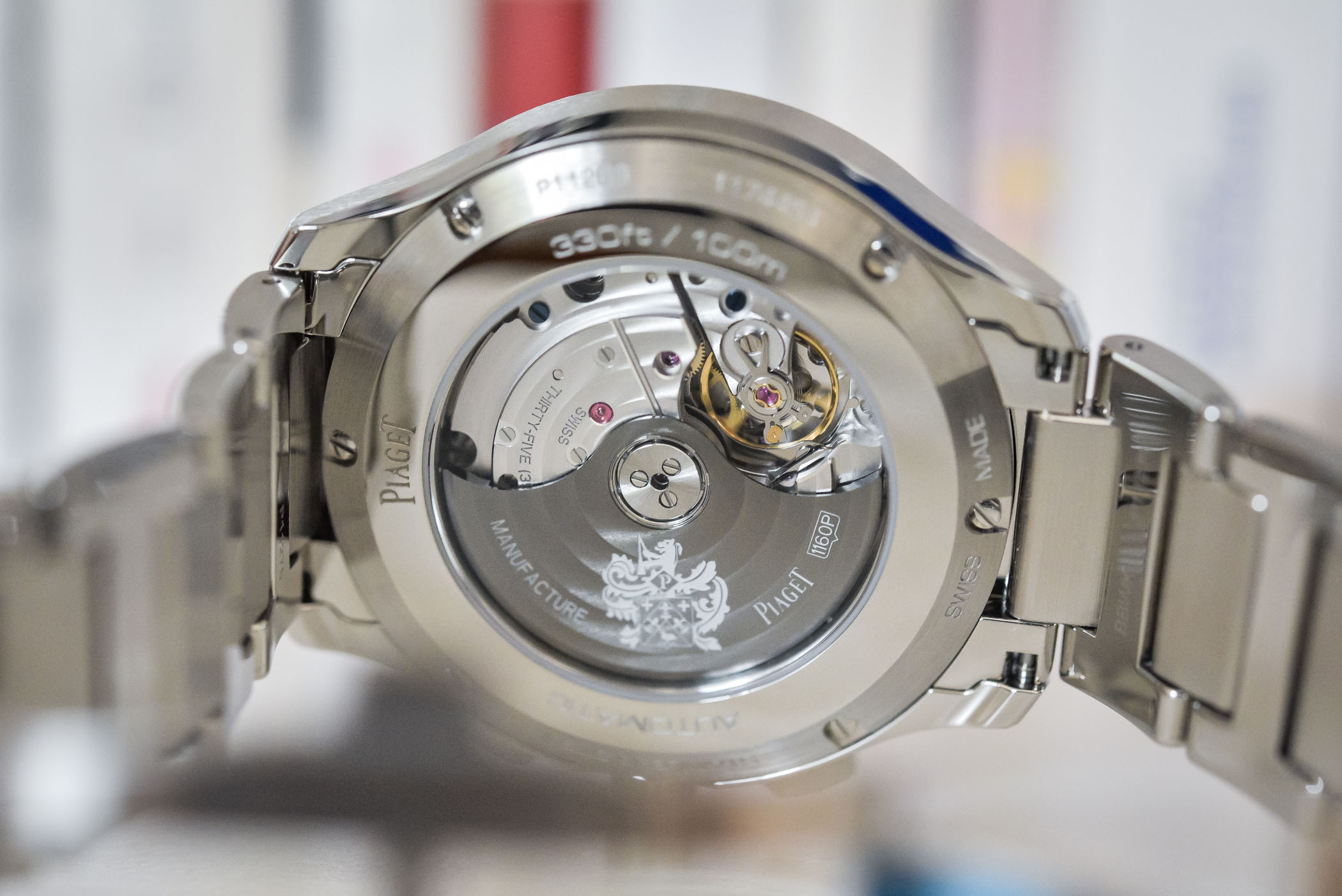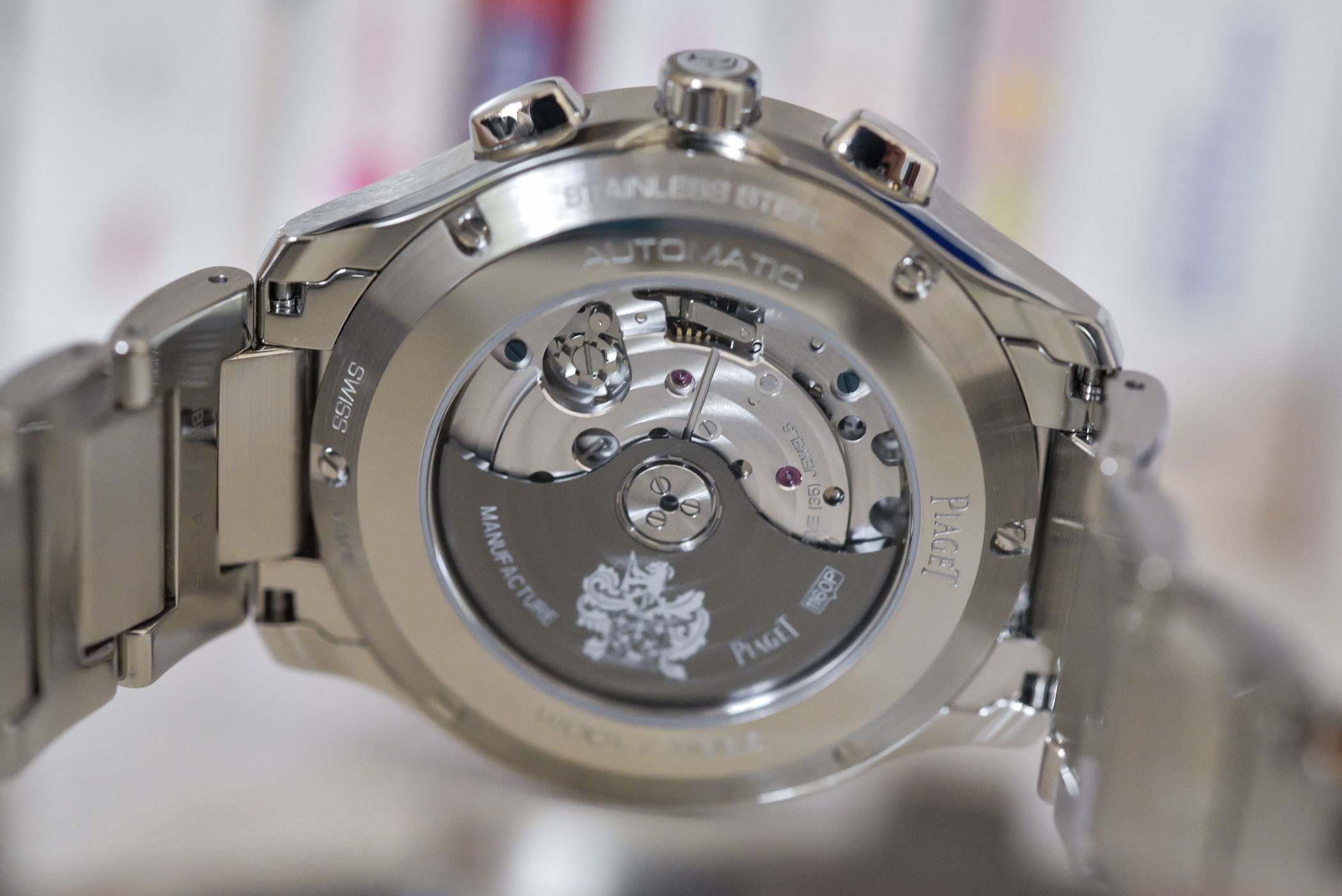Review – Piaget’s Vision of the Sports-Luxury Watch, the Polo S Chronograph
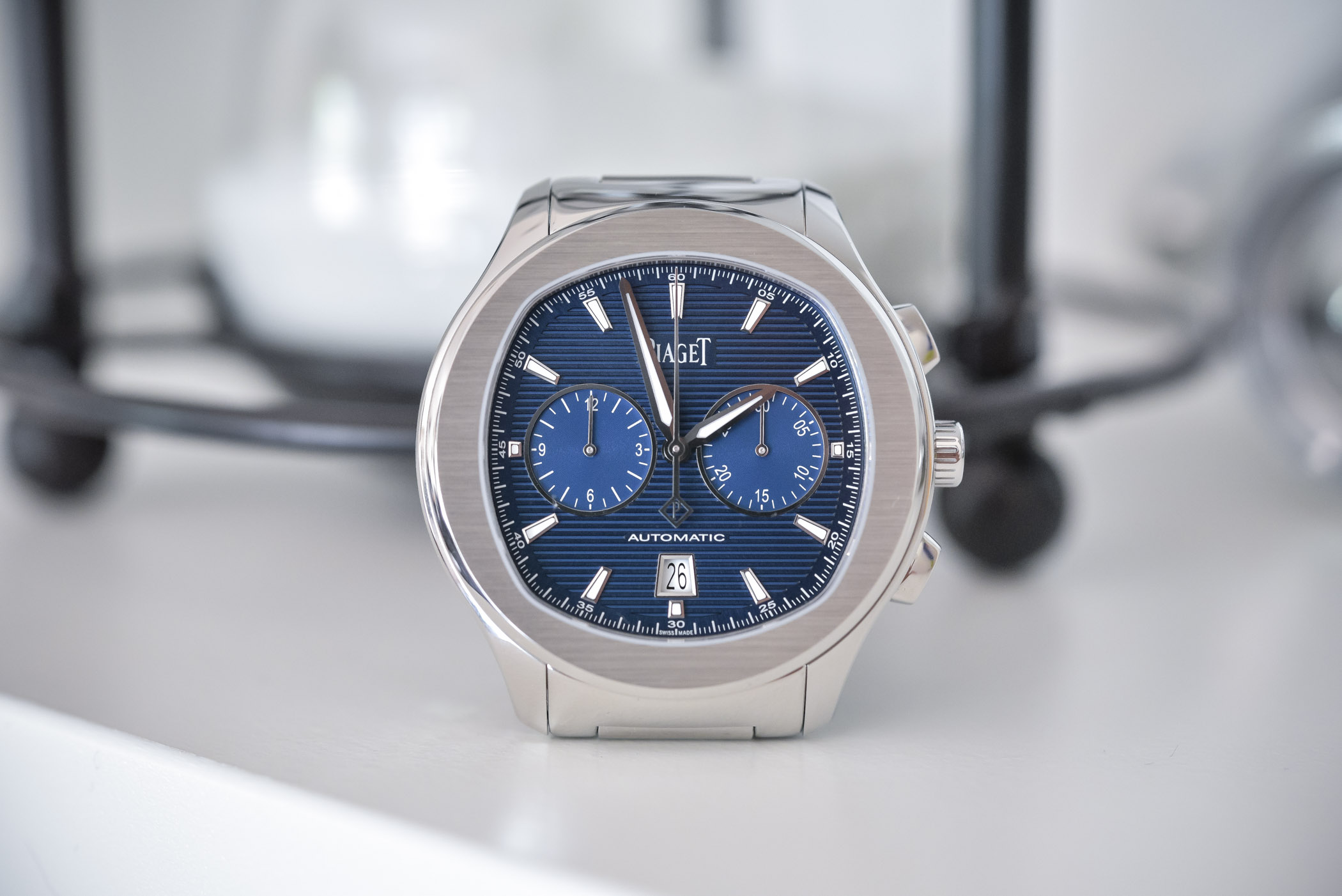
When the Piaget Polo S Chronograph (and time-and-date too) was unveiled last year in New York, the response was divisive to say the least. Many thought it paid too close a homage to certain other iconic steel sports watches, whilst others welcomed this bold move by Piaget to offer some more accessible models. Now, more than a year on, the dust has settled a bit and (presumably) emotions aren’t running quite so high, which makes it the perfect time for a hands-on review of the Piaget Polo S Chronograph in steel.
I must admit, when I first saw the press photos of the Polo S and the Polo S Chronograph last year, I was not particularly impressed. Whilst certainly a big step for Piaget design wise, the watches seemed to fall short of the mark, especially given that the accompanying marketing hype was all about leading rather than following. That said, I do feel that at the time it was difficult to form an impartial opinion, particularly given the endless stream of critical feedback on social media channels and watch forums, with phrases like ‘copycat’ and ‘lazy design’ being thrown around (and we must admit that we also played that game…)
So, when the opportunity presented itself to get hands-on with the Polo S chronograph, I tried to do so with an open mind and to be honest, I was surprised at what I discovered. Maybe not love at first sight, but pleasant feelings began to emerge after some (wrist) time.
The first thing to note about the Polo S Chronograph is that – for me, at least – it is very comfortable on the wrist, and seems to wear a bit smaller than its 42mm case size would suggest. Its marketed as a luxury sports watch, in the same vein of some of the competitor models it’s been compared to, and to a degree I think Piaget have succeeded. The case feels well-made and robust, mixing a round bezel with a cushion-shaped dial, and has the mandatory differentiating surfaces that are clearly part of the “sports-luxury watch” concept.
For me, the design is more evocative of the watches from the Emperador collection as opposed to the older Piaget Polo that the model is supposedly based on, but that’s not necessarily a bad thing. At least, there’s a clear lineage with some of Piaget’s previous creations. The finishing alternates between a brushed bezel and polished surfaces, which is exactly what you would expect from a luxury sports watch in steel.
Where things really get interesting for me is the dial. The blue is absolutely stunning and when it catches the light you can’t help but stare. It’s also probably the most contentious design element on the watch as it does absolutely resemble the Patek Philippe Nautilus (especially the 40th anniversary versions), and not in a subtle way at all. Whether that bothers you or not is a matter of personal opinion. What I can say is that the dial lay-out is clean and easy to read, with plenty of contrast. Plus, it gives the watch a strong presence on the wrist. Admittedly, a blue dial is always going to attract more attention but I imagine the silver dial would also look good on the wrist.
The time is indicated centrally, whilst the date is shown through a date window at 6 o’clock on a contrasting white disc (which I actually like in this instance.) There are two sub-dials at 9 o’clock and 3 o’clock, housing the 12-hour counter and 30-minute counter respectively, whilst chronograph seconds are indicated centrally. There is no small-seconds indication, which I thought would bother me more than it actually did. In reality, after the first few times glancing at the dial, I didn’t even notice its absence. Again, though, this is a matter of personal preference.
Inside the Piaget Polo S chronograph is the in-house calibre 1160P, which is visible through the sapphire caseback. Derived from the Piaget 880P movement, this automatic bi-compax chronograph is actuated by a column-wheel and a vertical clutch (the best-in-town combo), and comes complete with double barrel for a 50-hour power reserve. Functionally it feels good, with the chronograph pushers operating very smoothly. Finishing includes circular Geneva Stripes, blued screws, polished bevels and a blackened rotor with the Piaget emblem engraved. As you can see from the photos it’s not a highly-decorated movement but this is in-line with Piaget’s strategy of offering a more entry-level model. Overall, however, it is a nice looking, in-house movement from a notable Manufacture, so no real complaints there.
Where I did feel a bit disappointed however, was with the bracelet. This seems to be common issue that I’ve read about elsewhere and I must say I concur. It’s not that there’s anything specifically wrong with it as such, it just feels like the quality is not the same as the case and it also feels a bit narrow for the case size – and those pins to adjust the length of the bracelet are not on par with the required price. On the one hand, I think a good bracelet is critical for a steel luxury sports watch but on the other hand, if Piaget chooses to offer it on a rubber strap or a leather strap (like the more recent Piaget Polo S Black ADLC / Rubber), then arguably this becomes less of an issue. Still, I would like to see an improved bracelet from Piaget if I’m being honest.
Overall, I must admit that I liked the Polo S Chronograph more than I thought I would. On the wrist, the resemblance with the PP Nautilus and Aquanaut quickly disappears, and in fact it looks a lot more like an Emperador. I think it’s also important to remember where this model fits into Piaget’s own collections first, before considering it against the wider offerings of competitors. At 14,700 Euro, it is a well-priced luxury-sports chronograph and certainly caters more to those who are aspiring to a PP or an AP style sports watch but perhaps don’t have the budget, whilst still offering very good value for the money. More details on www.piaget.com.
Technical Specifications of the Piaget Polo S Chronograph
- Case: 42mm diameter x 11.2mm height – steel case – sapphire crystal on both faces – 100m water resistant
- Movement: Calibre 1160P, in-house – automatic integrated chronograph with column-wheel – 4Hz – 50h power reserve – hours, minutes, date, chronograph with 30-minute and 12-hour counter
- Strap: steel bracelet with h-shaped polished links
- Price: 14,700 Euro

